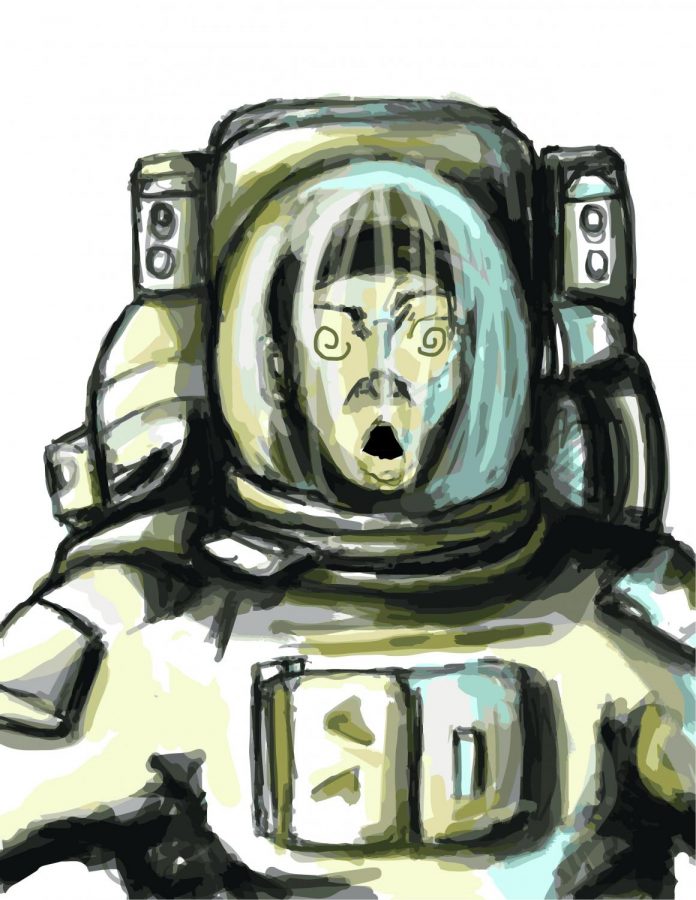Cosmic rays may make Mars mission hazy for human minds
Cosmic rays may make Mars mission hazy for human minds
May 11, 2015
With NASA rallying the funding support and technological advances required to propel a manned mission to Mars, many researchers are focusing on food storage, optimization of fuel usage and the logistics of safely moving people farther in space than mankind has gone before. But Charles Limoli, a professor of radiation oncology at the University of California, Irvine, is focused on a different facet of this many-pronged challenge. He is concerned about what is going on inside the minds within the helmets.
In a May 1 study published in the journal Cognitive Neuroscience, Limoli and his colleagues conducted cognitive tests on mice after they were exposed to charged particle irradiation—the same kind that astronauts undergo after they exit the protective magnetosphere of Earth. The researchers found that the exposure caused significant damage to the central nervous system, resulting in impairments in cognitive functions such as learning and memory.
The Chronicle spoke with Limoli about preventative measures in spaceship construction, the nature of cosmic rays and what really happens to an astronaut’s brain on the way to Mars.
THE CHRONICLE: Why is cognitive function affected when the brain is bombarded by the charged particles found in cosmic radiation?
CHARLES LIMOLI: What appears to be going on is that, as these charged particles interact with the cells and tissues of the brain, there is a persistent change in the structure of neurons. This occurs in this current investigation in a region we call the medial prefrontal cortex, but we have also seen these changes in the hippocampus and other cortical regions of the brain. Specifically, these changes are reductions in the dendritic complexity of neurons and in dendritic spine density. The dendrites of a neuron can be envisioned similarly to the branches of a tree and after irradiation—in this case, six weeks after irradiation—the dendritic complexity, or the branches of the tree, have been reduced significantly, anywhere from 20 to 40 percent. Small protuberances on these branches of the tree are called dendritic spines, similar to the leaves on a tree. These are markedly reduced after irradiation. These are important because they’re the structural correlates of learning and memory, they contain the synaptic proteins and machinery that mediate neurotransmission, and when you start to lose these, you have reductions in synaptic density and this will disrupt neurotransmission, which we believe underlies the changes in cognition we measure.
How long does one have to be exposed to radiation to experience this effect?
Exposures we conducted were quick. We don’t have the capability to irradiate animals for three years, like the time it would take to go to Mars and back, that’s economically and simply infeasible right now, so we approximate the situation in space. The doses the animals received would be similar to what an astronaut would receive over the course of 10 or 30 days, and the changes that we measure, because they’re in the brain, we’ve known from the clinical literature that these changes take time to manifest. So these changes in cognition that you would expect in an astronaut, if in fact they did occur, would not transpire quickly—they would take time to develop.
Are cosmic rays evenly distributed throughout space? Would astronauts be irradiated more or less from Earth?
Cosmic rays are remnants of supernova, and they occur isotropically, which means they come in from all directions and are uniform, so there’s no directionality to these. The Earth itself, because of its magnetosphere, is protected from these particles, as would be people on the space station, but once you travel outside of this magnetosphere, you become bombarded by these cosmic rays. So there’s really no escaping them, and there’s no real evidence that we have that there are regions of space that contain higher or lower levels of these.
What measures are in place to mitigate the effects of charged particles in cosmic radiation?
NASA has known about this for some time, and this is why they’re investing in this research. NASA’s engaged in developing more advanced shielding strategies and investing in research in people like me and others to try develop countermeasures, such as some pharmacologic compounds that can protect the brain from the adverse effects of these particles. The shielding strategies would be increasing the shielding on perhaps specific regions of the ship that the astronauts would sleep or rest. Or when they’re out on extravehicular activities, maybe using a special helmet. The pharmacologic strategies would be any variety of compounds that might impact the injured brain to provide benefits.








